-
Posts
266 -
Joined
-
Last visited
-
Days Won
2
Content Type
Profiles
Forums
Gallery
Events
Blogs
BMT Wiki
Collections
Store
Posts posted by convoyduel
-
-
CodeJ,
Did you ever sell the cab? I grew up about a mile from 5 Star and watched their stuff go through Ritchie Brothers last year. The prices were sad on some of the trucks. I saw the cab on Craigslist. PM me if you still have it or other R parts. I'd be interested.
-
A "690" would have come from the factory with a 300hp engine or under, unless the engine had to go through a special engineering review. I custom ordered a 355/380 Maxi-Cruise in my '02 RD and it came out as a 690 instead of a 688 as a result. Should have never sold that truck.
-
I have a CF with a 673/Allison combo that I'm thinking about taking the engine/tranny combo out of and swapping it into my '68 R608F with a Mack 5 speed. Anyone know if the engine mounts on a 707C and a 673 line up the same? The clutch is slipping on the 707C/5Spd and I'd really rather have the diesel than the 707C.
-
That lower fender hood debuted near the end of '72. In late '77, the top of the hood featured the center rib for the last handful of RS/RL7's built.
-
It's not a "low hood". It was the standard R7 hood mounted higher on the frame. In late '72 they came out with a new hood that dropped the fenders about 4 inches. There were a handful of the Westerns with the new hood and old shallow cab built.
The hoods changed again in summer of 1977 to feature a top rib on the hood that matched the design of the RS600L hood. That hood was short-lived as the Superliners came out for 1978.
As for Phantom 1, It had a 335 Cummins and Page & Page rear suspension.
-
-
Generally a bad valve or one that does not full seat will show up as a miss at idle or a roughness. Looking at the photo of your smoke, Grey color is generaly excessive fuel or an incomplete burn. Has anyone checked to see if the choke is full opening when warm? Is the choke pull off working? The Carb float could have one of 2 problems. A miss adjusted float (too high) or a bad float needle will cause that color smoke by dumping fuel. Another thing to check is the ignition coil out put. The do break down over time and it may not be suppling the needed output under load. The will cause a miss fire because needed voltage at the plug(s) is not trhere. Also the vacuum advance could be not working as suggested. Paul
The 707 was such a low volume engine (apparatus only) and has been gone for 38 years at best. You're not going to have much luck finding viable parts for it. Are you adamantly opposed to swapping it out with a 673 diesel? One of the members on here has a friend with one available super cheap from a fire truck.
My 707C had the same problems you describe did and we found it to be bad gas clogging the filters. The demand on hills was too much for the flow available through the filters.
-
1977 CF685FCA-1895 Dubois, Pennsylvania PA L1 100' Midmount Aerial Mack CF/Hamerly/Thibault Sold:PO Pikesville, MD
Sold: PO St. Louis, MO
-
There's a whole bunch of things at play here and its easy to get screwed up. Before buying anything, if you don't know for sure, you need to post your exact size tire and folks here will help you find out the tires that are equivalent rolling diameters.
Even though it is tempting to refer only to the "wheel" or "rim" size of 20", 22", 24", 22.5", 24.5" etc,, another important factor in the rolling diameter is the complete size of the tire mounted on the rim.
For those converting from the most common tube-type tire/rim/wheel assemblies to tubeless, the size conversions are:
10.00x20 (bias) and 10.00R20 (radial) tube type tires convert directly to 11R22.5 tires when you change the wheel/rim assembly along with it. In otherwords, 10.00x20 has the same rolling diameter as an 11R22.5.
10.00x22 (bias) and 10.00R22 (radial) tube type tires convert directly to 11R24.5 tires when you change the wheel/rim assembly along with it. Note that the 10.00R22 (radial) is no longer available in the US and 10.00x22's (bias) are only available by special order from a limited number of distributors. These are the cheap Chinese and Indian tires that were referred to in an earlier post.
Be careful when buying "22.5" or "24.5" tires as they come in various low-profile sizes that share the same 22.5 or 24.5 inch rim respectively, but have different rolling diameters. Some of the "low profile" tires also use a slightly narrower rim. Also, for heavier applications, some 22.5 or 24.5 tires have a larger rolling diameter, such as 315's, 385's and 425's commonly used in refuse, fire and construction trades.
On tube type tires, although 10.00R20 and 10.00x20 are the most common size, there are 9.00x20's, 11.00R20's, 12.00R20's and many more.
This can get very confusing really fast.
On the wheel side, Dayton (spoke) assemblies limit the ability to increase or decrease the wheel size, unlike disc wheels. On disc wheels, however, you have to know if you have "ball-seat" stud piloted wheels or "hub piloted" wheels. The changeover was gradual but let's call 1990 the point where hub-piloted wheels started becoming popular. Today they are the industry standard. You can still buy new ball-seat wheels, but they are usually non-stock items. When buying a set of used wheels, be sure to find out exactly what they are as they are not interchangeable at all.
Hope this is as clear as mud now.
-
 1
1
-
-
That new paint sure looks good - what is under the hood?
I saw a couple of retired St. Louis Mack firetrucks a few years ago at a fire department owned storage lot located off Goodfellow, just south of Natural Bridge.
Did this come from there?
No, this one went to the St. Louis City Parks department as a riverfront flush truck in 1990 until 2000 then to a junkyard off of Broadway by O'Fallon Park in north St. Louis City where I got it from. There were 12 identical units ordered in '68 (S/N's 1004-1015). This one is 1006. The City still has one in storage at that facility you mentioned, but it has a bum engine. One's scrapped out in a junkyard in Alton, another collector here has one in pieces in St. Clair. The other 8 ended up down in Alabama and Mississippi.
The truck has a 707C gas with a 5 speed direct. The pump is a 1000 Waterous but is stuck.
-
-
Who did you use for the work? I've got to head to St. Louis Spring in the near future and would like to have both of my RL's radiators looked at for integrity. The Peoria market is out.
Rob
It cost me $1308 with tax, a tad lower than the original estimate. I took off the fan shroud myself and there are no shutters on the radiator. They asked if I was in a hurry and I said no. It took 8 calendar days from drop-off to pick-up. They had zero reservation about doing a truck radiator. They acted like that's all they do.
The shop was Al's Radiator in south St. Louis County just off of Lindbergh (61/67) and Tesson Ferry Rd. (MO Rte 21). Very nice clean shop, very nice people. I had never had anything done there before, but they came highly recommended from the Museum of Transportation folks. It's also very close to me as an added bonus. Steve is the owner (don't know who Al is or was).
-
Does anyone have a part number or good source for a replacement radiator core for a '77 CF685? The core in mine is getting pretty bad and I want to replace it. Looks like it will be a heck of a lot of fun getting it out.
I was able to get the radiator out a couple of weeks ago. Took it to a reputable shop in St. Louis and got it back with a brand new core, gaskets, grade 8 bolts and dressing the whole works. In all, it took about 3 hours to get out and 2 hours to get back in. I was dreading the project but it turned out to be rather simple overall. I'd always heard dreadful things about radiator replacement in a CF, but it was extremely simple. Hardest part was dealing with the aftermarket junk installed on the doghouse.
-
A 4.17 rear is a problem on lot of macks with the big over drive trans and even on the older macks. They would be better off if the trans was a .83 o/d instead of a .71 like mine.You stay under 1500 rpm to long in hi gear.
I almost bought a new '04 with a 460, Mack 18 and 4.17 rears. We tested it for what was to be a week. After the second day, we turned it back to the dealer because it couldn't even get started. It was a quarry type tri-axle with 20 steer, 22 lift and 44 drivers. The dealer finally said they figured out there was a torque limiting setting in the programming that was set too restrictive. Maybe some of the Mack techs know what that might mean.
-
I think you're starting in the wrong place. I suspect your slack adjusters and/or s-cam bushings are extremely worn and not allowing the s-cam to rotate and apply proper pressure to the rollers on the shoes. I had a '97 CL713 that had the exact same problem.
I'm also not sure what you would be gaining on plumbing the hand valve to the tractor service brake line. You would have to tie in the the outbound air line from the handvalve into the tractor service brake line. The easiest place would be to plumb it to the service INPUT line on the tractor protection valve as in your case the TPV is no longer something that is used.
-
You need to dismount the power steering gearbox and look at the shaft and arm in detail. That is not something that is "normal" and without diagnosing the exact cause, you risk literally killing yourself or someone else if you try driving the truck without fixing it 100% properly. I'm sure everyone knows this already, but steering repairs are NEVER something that should be shortcut or done half-ass. That gearbox is very heavy and its location makes it extremely awkward to handle. I suggest using a rolling 2 ton floor jack to support and lower the gearbox if possible (even if you're outside and laying in the dirt or gravel).
-
Steve,
I also used Craiglook everyday- I guess Craigs list doesn't want our business as I cannot spend the time to go thru all Craigslist locations to find parts and vehicles. Too bad it was a great resource, if we find another good search tool that works will post it.
Firemack
Glad to hear I'm in good company. I've bought 3 trucks using craiglook in the past 3 months. I have also been extremely frustrated by Craigslist's inability to search multiple areas. I hope something gives.
-
I'll be heading down there next week to find out more information. I have spoken to one company and was told i could not see the job site untill i signed a contract. Funny thing was i had only asked if there was an office or a person i could meet with.
Thanks man, the DM is a beast!ATh
Save yourself a lot of time and aggravation and stay in St. Louis. We went down after Katrina in late 2005 thru mid 2006, brought in a whole heaping bunch from St. Louis and Minnesota. You don't understand crooked until you work in New Orleans and the surrounding area.
Basically, there are a handful of guys down there who do nothing but double, triple and quadruple broker trucks. Even if you don't think you're dealing with this small knit group of clowns, you'll soon find out that their hands are in the very pot you're working on. You'll see a lot of iron sitting around down there, most of it because they made it down there but didn't have the funds to get back home. You'll start working for someone and things will go okay for a week or so, then your pay gets held up, or they start telling you that your truck needs to have a liner to work or some other thing. Also, all of a sudden you find another broker or two inserting themselves between you and the contractor. In the end, you'll get shafted out of weeks worth of pay.
The contracts they have you sign are worthless and don't hold up. Not only that, but you have little recourse to sue as a Missouri company against someone who lists an address in Mississippi but works you in New Orleans. You'll go through all sorts of hoops getting ID's issued by the Parish Constable, but never need them. You'll also be asked to pay for the right to work, not only by the broker, but also the contractor and even the Corp of Engineer inspector from time to time. I'm not exaggerating. I was there and experienced it first hand. I refused to pay bribes and that was the end of it.
The worst part about down there is that the Corp and the brokers put out a call on any given day for say 200 trucks on a job. Trucks are lining up at 3AM or earlier for a 7AM start. The Corp inspector or contractor comes along and selects the 50 trucks they need for the day and tell the rest of the trucks to go home. Most of the guys are starving and sit lined up along the roads to the jobsite. You don't want to get caught alone or broke down.
You may run 20 or 30 loads for the day but only get paid for 15. Again, you have absolutely no concept of how crooked things are until you go down there. Even though my experience was 4 years ago, some others from around St. Louis have tried it since and experienced the exact same thing. I still get calls maybe every 6 months or so from a guy named Mac and another guy named Jefferson asking me for trucks. These are two of the very guys that screwed me and others VERY hard. I'm stupid, but not that stupid. Once again, no matter what you hear otherwise, everything moving down there winds up going through a select few guys and every one of them was crooked. It's not like up here in St. Louis. I would really think twice about doing it if I were you. Good luck with whatever you decide to do.
-
I was on the phone with a friend and he did not know I was in a truck....
Trent
Trent,
What's the point then?
As for the lawsuit, here's a link: http://latimesblogs.latimes.com/greenspace/2010/09/air-pollution-railroads.html
-
I agree with the sentiment, but the reality is that with the new CARB rules in California, I think there will be a fairly quick adoption of rules by the EPA that compeltely outlaw the use of diesel engines made prior to 1994 for commercial use. I hope I am wrong and I hope that the railroads' recent victory over CARB in the 9th Circuit is quickly applied to trucks as well.
-
Does anyone have a part number or good source for a replacement radiator core for a '77 CF685? The core in mine is getting pretty bad and I want to replace it. Looks like it will be a heck of a lot of fun getting it out.
-
As I commented over on the ATHS forum (and got in a few digs at the KW/Pete cultists as well), I see two decade and more old Macks still working around here every day... Nothing unusual at all!
Well, the 700 Westerns are rare in St. Louis, but it's everyday here you see R's working, old MB front loader garbage trucks and old MC/MR's. GHG, I agree with your assessment AND I'm a fan of Pete's and KW's.
-
My question is, Did the tire shop guys actually notice that the two vintage Mack Trucks were there or did you have to draw it to their attention?
I'm in and out of there enough with my toys that they know the Rubber Duck truck well. The other Mack was there first and they were telling a few of the newer guys about my truck when I pulled in. The new guys said they were stunned at how beefy the trucks were and how simple they were then compared to all the junk on trucks now. Everyone agreed that there was very little chance that anything built today would be pulling into a tire shop in 35 years.
-
Lost track of this post. Well I am now working but I only got the Commercial tags to run just in Jersey. Probably a very bad decision as I am not staying steady and missing out on alot of Back Loads because of it. So I am thinking of getting the Apportioned soon. But, I have now spoken with 3 different guys that have been in the business for many years and all 3 of them said they dont have an MC Authority. They said just get the Apportioned Tags with your DOT number and that is it. They said they dont have it because all they are running is Jersey and PA. I dont know how they are doing it, but they are. I will have to talk with them more about it but from what I know of, you have to get your Authority if you are running in 2 or more states that the IRP is in effect.
Apportioned tags and a USDOT number without Common Carrier Authority is only valid if you are a private fleet hauling your own equipment or product OR if you are hauling an "exempt" commodity. Under the FMCSA ruling, soil, sand and gravel are NOT exempt commodities and therefore would require MC authority. . http://www.fmcsa.dot.gov/rules-regulations/administration/fmcsr/fmcsrruletext.aspx?chunkkey=090163348008ef07
Don't forget that you also need IFTA to cross state lines.
I think you are going to find that the cost of compliance will put you at a severe economic disadvantage. Dirt dobbers and dump truckers in general are among the most flagrant violators of weight and compliance laws, largely because the bar to enter the market is so low. Those that are non-compliant work for less and therefore drive the rates down to a point where compliance can be cost prohibitive. Rates are set by the customer, not the hauler, so when it comes to fuel, paying a driver, making a truck payment, insurance or compliance, you know where the first cut comes. Compounding the problem is that quarries, contractor and other customers look the other way and ask no questions. It's not like they are trusting you with a load of flat screen TV's, its something they just loaded with a Cat 966. They can get more. Dump trucking, for the most part, is a race to the bottom. No one ever got work on an hourly job or took over a material haul with a rate that was higher than the previous guy.



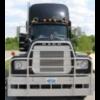
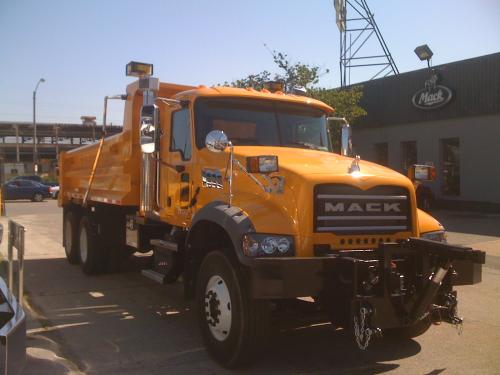
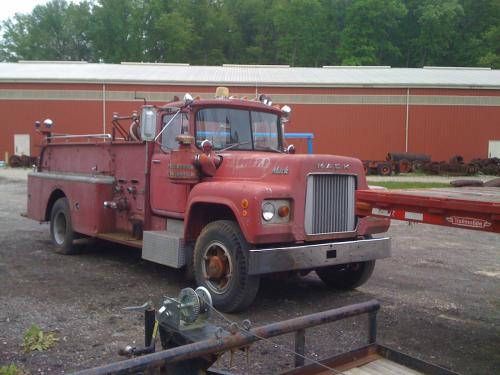
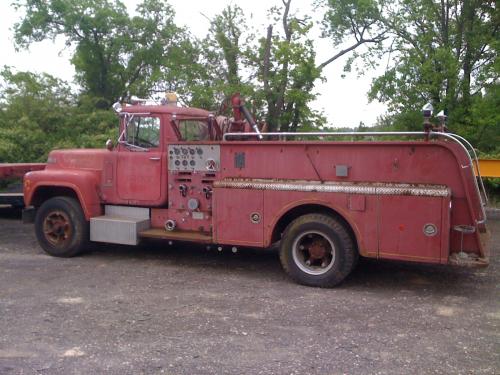
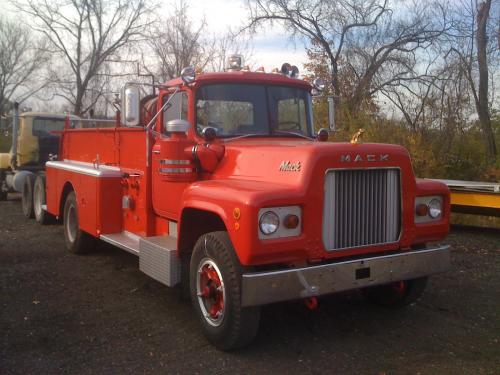
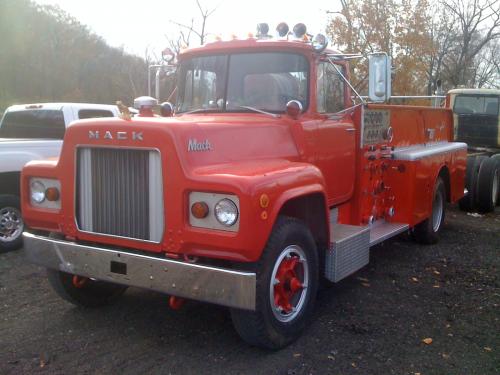

M Drive and MP8
in Modern Mack Truck General Discussion
Posted
Does anyone have word on the Mack M Drive transmission? I'm contemplating a new CHU and curious about the M Drive's experience thus far. I had terrible luck with the '04 CHN613's with the AC427's. I was hoping to avoid that kind of experience again.